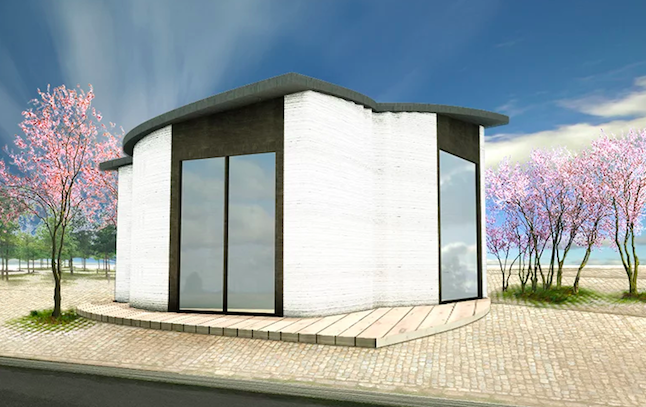3D printed buildings are taking off – we’ve seen many examples of the technology being used to create structures all across the world. By the end of this year, we’re likely see many innovative uses for the technology coming out of Belgium.
This is thanks to Kamp C, an autonomous provincial company based in Antwerp. The company’s aim is “to accelerate the transition to a sustainable society.” As part of this initiative, they launched an EU tender for a construction 3D printing process, which recently closed. The successful recipient? Danish construction printer manufacturer, 3D Printhuset.
3D Printhuset’s pedigree 3D printing buildings is well known. The company’s first construction printer, the BOD1, was used to create the BOD office hotel in Copenhagen. 3D Printhuset’s newer BOD2 system will be used by Kamp C for its 3D printed construction projects.
Henrik Lund-Nielsen, CEO of 3D Printhuset, is positive about the benefits 3D printing will bring to construction. He said in a blog post: “With our printer, companies can determine to the millimeter how they want to construct their building. Moreover, a 3D printer offers much more freedom of design to architects. Because it is an automated process, productivity and efficiency also increase. In addition, a 3D printer ensures safer and better working conditions.”
3D Printhuset’s Upgrades to the BOD1
After printing the BOD building, 3D Printhuset got down to ironing out a few issues with the construction printer and updated it to create the BOD2 modular system.
Kamp C opted for the 444 version of the BOD2, which is capable of printing sections of buildings up to 8.3 meters high, 9.5 meters wide and 9.5 meters deep. However the system is modular and scalable, meaning it’s entirely possible to accommodate larger project as demand increases.
3D Printhuset also fixed a range of issues they faced with the original BOD, resulting in the BOD2 being more robust, precise and a lot quicker. In fact, it can print at up to one meter per second, extruding almost 10 tonnes of concrete per hour — providing the operators and specific material properties can accommodate such speeds.
Lund-Nielsen adds: “For construction companies, the time they can save with a 3D printer is of course one of the most important advantages: time is money… Within the world of 3D printing, there is also plenty of experimenting with new – often recycled – materials.”
Source: tct Magazine

License: The text of "3D Printhuset Wins Kamp C Tender for Construction 3D Printer" by All3DP is licensed under a Creative Commons Attribution 4.0 International License.